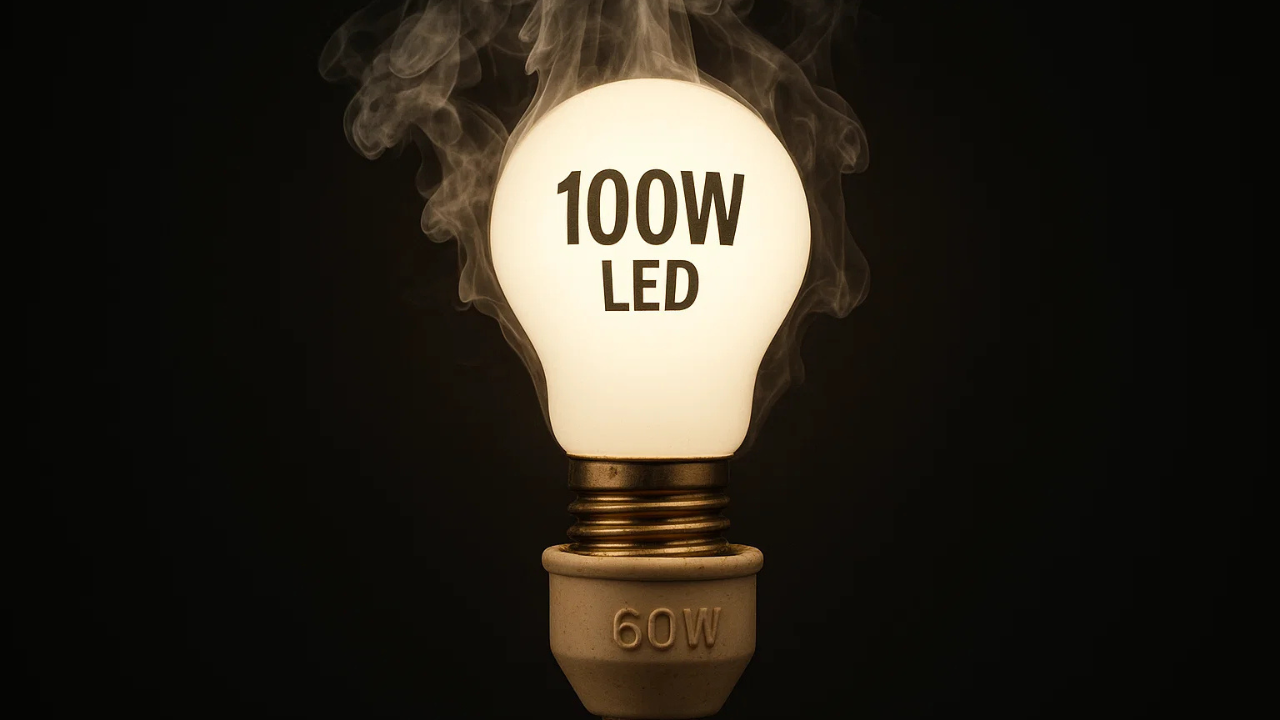
When it comes to replacing traditional incandescent bulbs with LED alternatives, many people wonder if they can use a higher-wattage LED bulb in a socket rated for a lower wattage. This article explores whether a 100W LED bulb can be safely used in a 60W socket, considering factors such as energy efficiency, safety, and performance.
Understanding LED Bulb Wattage
One of the key differences between LED and incandescent bulbs is energy efficiency. LED bulbs produce the same amount of light as incandescent bulbs but with significantly lower wattage. For instance, a 100W LED bulb can emit the same brightness as an incandescent bulb but consumes much less energy. This is because LED technology is designed to be more efficient, converting more energy into light rather than heat.
While wattage measures energy consumption, lumens measure brightness. It’s crucial to understand this distinction when choosing an LED bulb. Many consumers mistakenly believe that higher wattage equates to more brightness. However, with LEDs, it’s more accurate to look at the lumens to determine the bulb’s brightness. For more information on wattage and lumens, check out this detailed guide on LED bulb equivalency.
Safety Considerations
Adhering to fixture wattage ratings is crucial for safety. A fixture rated for 60W is designed to handle the heat output of a bulb with that wattage. Exceeding this limit with higher wattage bulbs, even if they are LEDs, can pose risks such as overheating and potential damage. It’s essential to follow the guidelines provided by manufacturers to avoid any hazards.
LED bulbs have a reduced heat output compared to incandescent bulbs, which makes them safer to use in various fixtures. However, it’s still important to ensure that the socket and fixture can accommodate the bulb’s design and heat dissipation. You can learn more about these safety aspects in this informative article on LED bulb usage.
Energy Efficiency and Performance
One of the primary advantages of LED bulbs is their energy efficiency, leading to substantial savings on electricity bills. By replacing traditional bulbs with LEDs, you can significantly reduce your energy consumption without compromising on brightness. This transition not only benefits your wallet but also contributes to a more sustainable environment by lowering carbon emissions and reducing waste.
LED bulbs are known for their longevity and consistent performance. Factors such as quality and usage can affect their lifespan, but generally, LEDs last much longer than incandescent bulbs. For an in-depth review of the best LED lightbulbs available, check out this comprehensive review by The New York Times.
Practical Tips for Choosing LED Bulbs
When selecting an LED bulb, consider factors such as brightness, color temperature, and design. Ensure that the bulb fits the fixture and meets your lighting needs. For optimal performance, follow installation best practices, such as ensuring the bulb is securely fitted and compatible with the fixture.
Transitioning to LED lighting may come with some challenges, such as finding the right bulb or troubleshooting flickering issues. Common problems often have simple solutions, such as checking the fixture compatibility or adjusting dimmer settings. For additional guidance, a study on LED lighting challenges provides valuable insights, which can be accessed here.